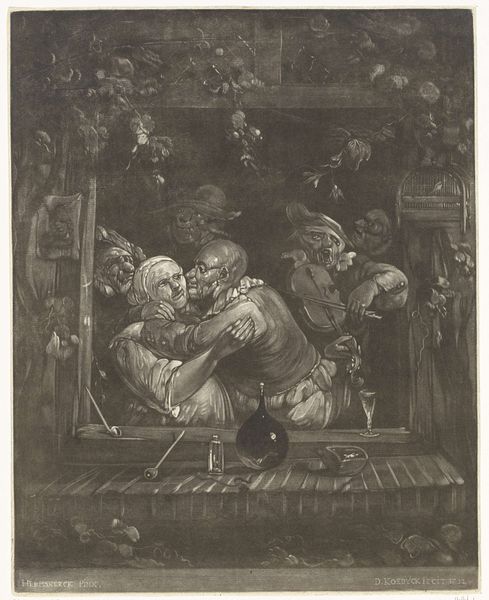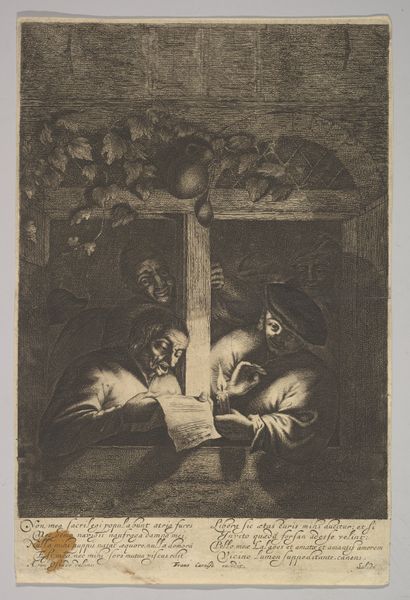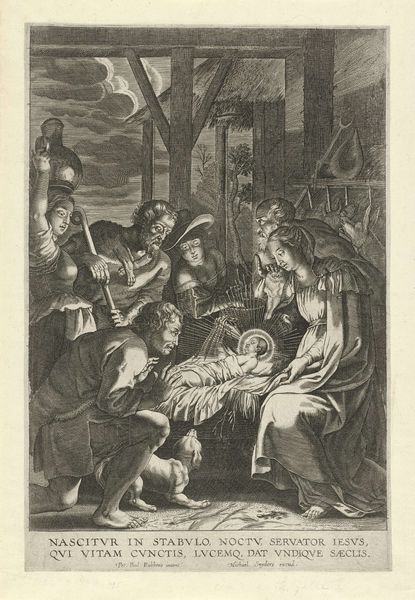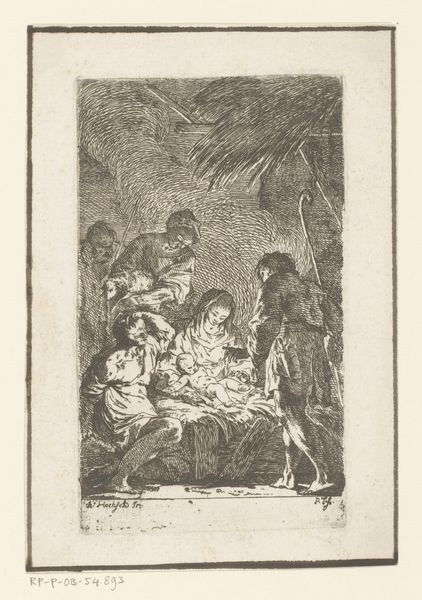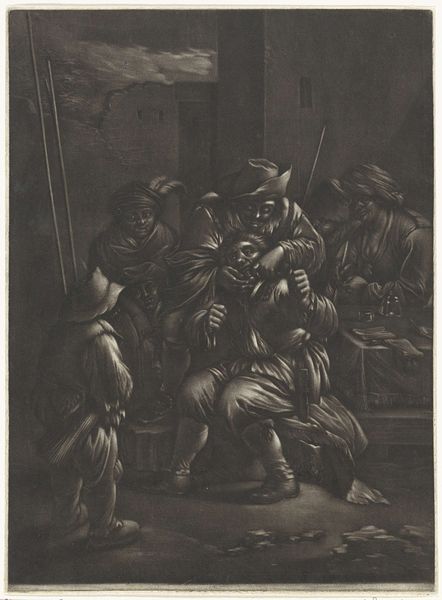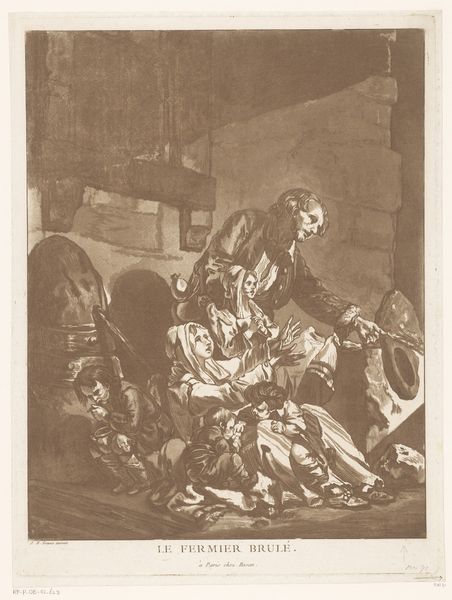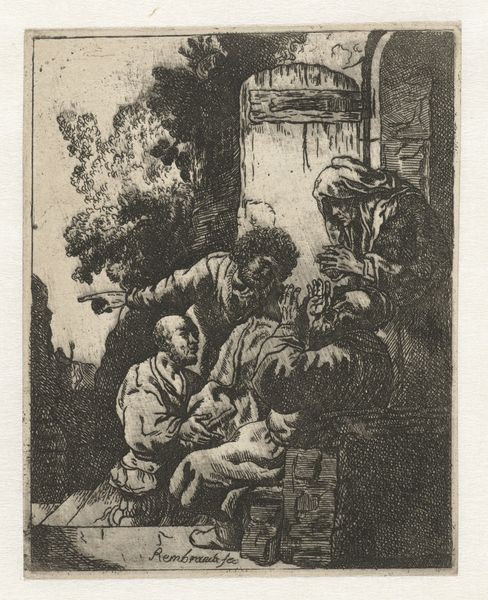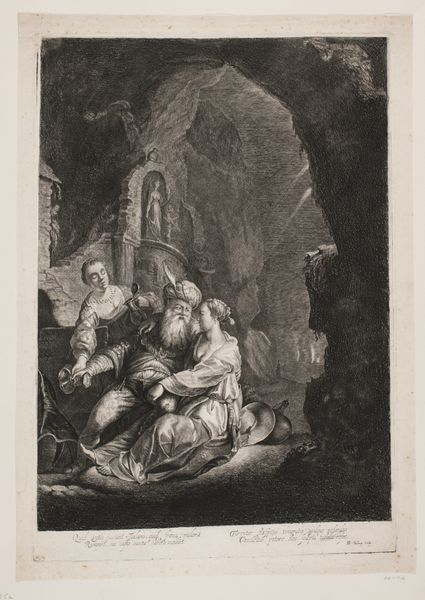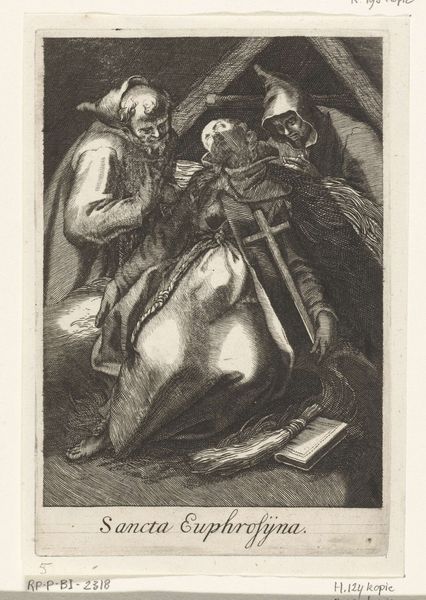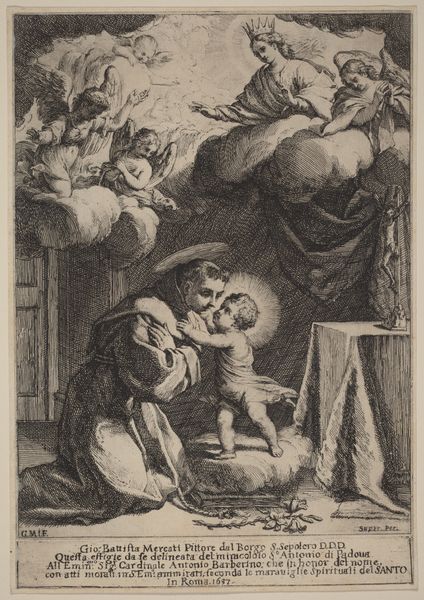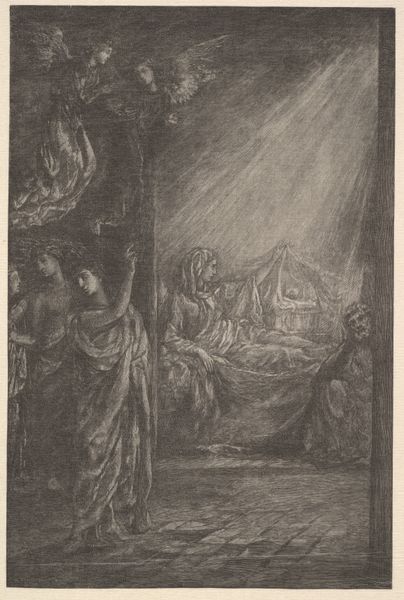
print, etching
#
baroque
# print
#
etching
#
genre-painting
Dimensions: height 334 mm, width 266 mm
Copyright: Rijks Museum: Open Domain
Editor: Here we have "Gezelschap van zingende en drinkende figuren," or "Company of Singing and Drinking Figures," an etching made in 1732 by Dirk Koedijck. It gives a glimpse into what feels like a boisterous tavern scene, everyone packed together. What can we gather by looking at the materiality of this print? Curator: Etchings, being a form of printmaking, allow for wider dissemination of images. In 18th century Dutch society, what did that democratization of art mean, especially with scenes like these, representing everyday life and perhaps even implying critique? Think about the material costs of paper versus canvas, the speed of production for multiples, the accessibility for different social classes... Editor: So, this wasn't necessarily for the elite, like an oil painting hanging in a wealthy home? It was made for the masses? Curator: Exactly! These were images made for consumption. Prints were cheaper and widely available, almost a commodity themselves. Genre scenes, particularly those involving leisure and vice, circulated broadly. How does understanding its status as a material object shift your understanding of the image's themes? Editor: Well, if it was widespread, perhaps the behaviors shown - the drinking, the communal merriment - were both observed and, in some way, condoned or recognized. It wasn't a secret world; it was part of daily life available for observation, like we're doing today! So the printing process in itself becomes the context. Curator: Precisely. By looking at how the art object was created and how it circulated, we unlock new interpretations of the artwork itself. And this wasn’t neutral production – skilled labor and commerce went into these prints, further embedding the image within material culture. Editor: That makes so much sense. It's like the print is a mirror reflecting both the seen and the unseen economic and social dynamics of the time. Thanks, I will look at art in a new light. Curator: My pleasure. Art doesn’t exist in a vacuum; it is rooted in how and why it came to be made.
Comments
No comments
Be the first to comment and join the conversation on the ultimate creative platform.
